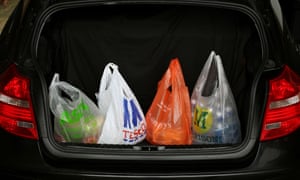Amazon's one-hour UK delivery service to include pizzas and ice-cream
Prime Now will offer up to 60 frozen and chilled food products to customers in Birmingham and parts of London
Amazon is vying for a slice of the UK grocery market. Photograph: Design Pics Inc/Rex Features
Amazon has taken the first step towards offering a full grocery delivery service in the UK, turning up the pressure on the big supermarket chains.
The American online retailer is testing the market by offering between 50 and 60 frozen and chilled food products as part of its Prime Now one-hour delivery service. It started in Birmingham on Tuesday and will expand into some London postcodes next month.
Items on offer will include Chicago Town pizzas, Birds Eye fish fingers and Ben & Jerry’s ice-cream – the sort of items shoppers might want to order quickly for a night in front of the TV.
Amazon said: “Prime Now customers already benefit from ultra-fast delivery on everything from essentials like bottled water, coffee and nappies to must-have products like the latest video games and devices. We are excited to be adding a range of chilled and frozen items to this selection.”
It sells about 200,000 groceries from air freshener to coffee and biscuits through its usual website in the UK. Amazon Fresh in the US also offers fresh fruit and vegetables, dairy products and meat with free same-day delivery for orders of more than $35.
The big four supermarkets are facing growing competition from budget retailers. Photograph: Chris Radburn/PA
The internet is providing one of the few avenues of growth for the major supermarkets, many of which have been forced to close stores and lay off staff as shoppers change their habits. Last year, nearly 6% of groceries were sold via the internet in the UK, according to the industry analysts Conlumino. IGD, the industry association, predicted online grocery sales would more than double between 2014 and 2019 to £16.9bn, more than 8% of total UK grocery sales.
Neil Saunders from Conlumino said: “Any new entrant is an unwelcome additional pressure. Such is the zero-sum nature of today’s grocery market that any sales Amazon Fresh manages to generate will come from some other player.”
However, Amazon had not been able to take a major share of the grocery market in the US, he said. Even its home town of Seattle, where the retailer controls 40% of online groceries, its total share of grocery sales is 1.2%.
Saunders said the high cost of delivering food and drink had led Amazon to restrict deliveries to its top customers who pay a fee to sign up to the company’s Prime service, thereby restricting its appeal.
In the UK, Amazon faces far stronger competition on groceries than in the US as Tesco, Asda, Sainsbury’s and Morrisons have their own online grocery services.













